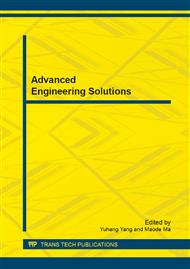p.669
p.674
p.679
p.684
p.688
p.695
p.700
p.706
p.711
Monte Carlo Simulation of Low-Energy Neutron Attenuation Performance in Boron Steel
Abstract:
In this paper, KTA-304 boron steel for low-energy neutron absorption and attenuation is studied by Monte Carlo method, and compared with the traditional SUS304 stainless steel. Taking into account some factors, such as processing conditions, corrosion resistance, hot ductility, etc. we may reasonably come to the conclusion that 1.13% boron concentration in the steel has a better absorption capacity to the low-energy neutron and can effectively reduce the secondary γ-ray effect, meeting the request of radiation protection with reduced material thickness. Besides, low-energy neutron attenuation coefficient was calculated at different boron concentrations of the steel in different energies, providing a reasonable basis for selecting the neutron shielding materials. The γ-rays released in the neutron capture process were considered, too.
Info:
Periodical:
Pages:
688-691
Citation:
Online since:
July 2014
Authors:
Price:
Сopyright:
© 2014 Trans Tech Publications Ltd. All Rights Reserved
Share:
Citation:


